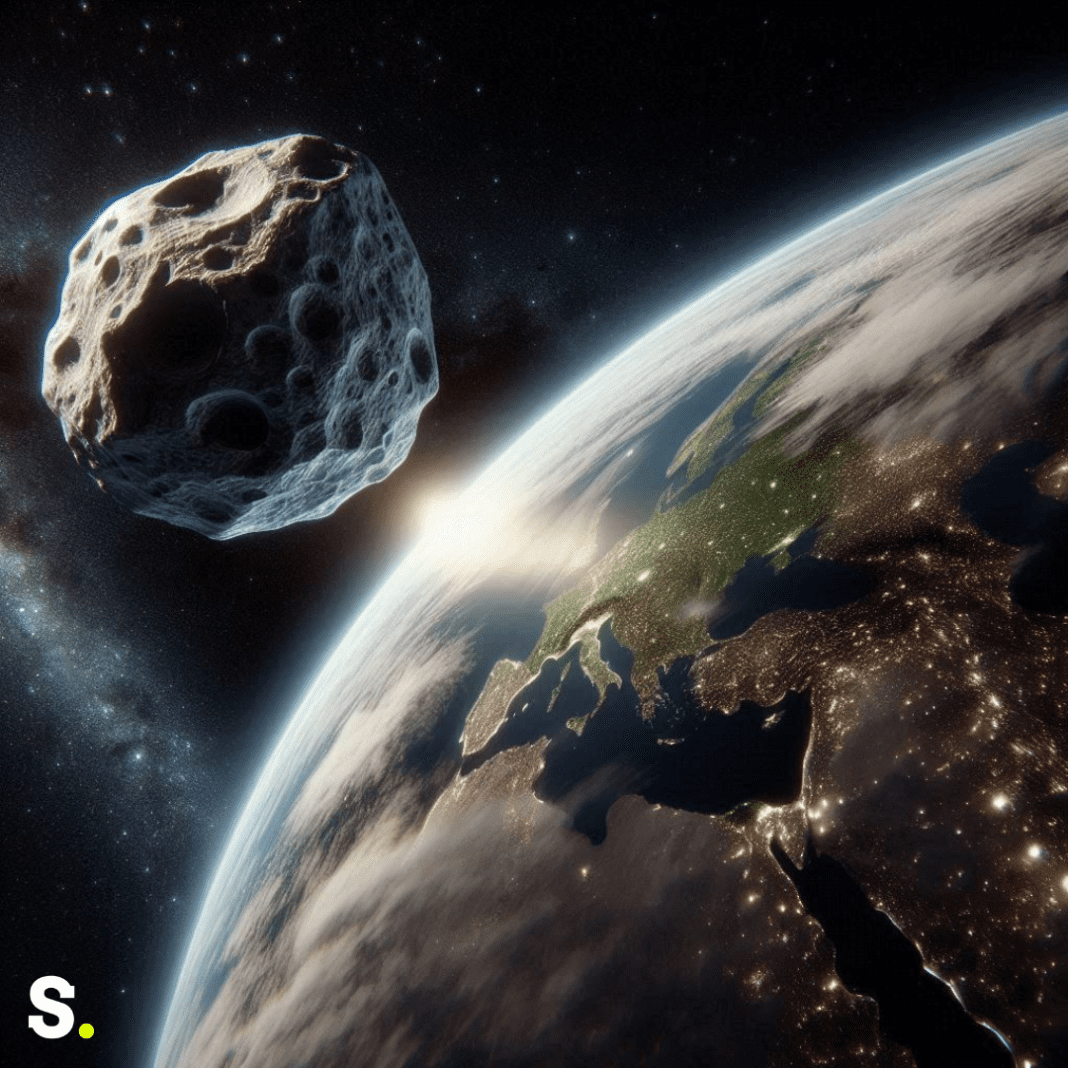A Close Call with Asteroid 2011 AM24
On July 26, 2024, Earth will experience a close encounter with a potentially hazardous asteroid known as 2011 AM24. According to NASA’s Jet Propulsion Laboratory, which monitors space objects through its Asteroid Watch program, this asteroid is about 1,640 feet in diameter and is traveling at a speed of over 3.9 miles per second. Scientists predict that 2011 AM24 will travel about 4 million miles from Earth, despite the fact that this may sound concerning.
NASA uses a specific criteria to classify asteroids as “potentially hazardous.” An asteroid is considered potentially hazardous if its orbit brings it within 0.05 astronomical units (or about 4.7 million miles) of Earth’s orbit and if it is large enough to cause a significant regional disaster should it collide with our planet. Even though 2011 AM24 satisfies these requirements, Earth is not in immediate danger from its current track. However, its proximity offers an opportunity to study and monitor such objects to ensure that we are prepared for any future risks.
What Makes Asteroid 2011 AM24 Special?
Asteroid 2011 AM24 belongs to a category of asteroids known as the Apollo group. The orbits of these asteroids are distinctive in that they cross or approach the orbit of Earth. The Apollo group is notable because its members have orbits that bring them near not only Earth but sometimes also other planets, such as Venus and Mercury. As of January 1, 2023, scientists have identified 17,402 Apollo asteroids. This number represents a significant increase from 8,316 known Apollo asteroids in January 2017. The rise in discoveries reflects advancements in technology and techniques used to find and track these space rocks.
The asteroid 2011 AM24 completes its orbit around the Sun in around 467 days. It won’t be predicted to come close to Earth again until September 2038. The fact that it crosses Earth’s orbit means it is a valuable subject for ongoing research. Monitoring its path helps scientists predict future interactions and assess any potential risks to Earth. Tracking such asteroids allows researchers to develop strategies and technologies for planetary defense.
NASA’s Efforts to Protect Earth
NASA is at the forefront of planetary defense efforts, working to track and mitigate potential asteroid threats. One significant initiative in this area is the DART (Double Asteroid Redirection Test) mission, which took place in September 2022. This mission involved launching a spacecraft designed to intentionally crash into an asteroid named Dimorphos. Didymos is a bigger asteroid that is orbited by the small moon Dimorphos. It is around the same size as the Giza Great Pyramid.
The DART mission’s goal was to test whether a spacecraft collision could alter an asteroid’s orbit. This test was crucial for understanding how we might change an asteroid’s trajectory if it were on a collision course with Earth. The impact was successful in changing Dimorphos’ orbit around Didymos. However, the collision also ejected a considerable amount of debris into space, including fragments up to a meter in diameter. This data helps scientists understand the effects of such impacts and improves our knowledge of how to handle future asteroid threats.
NASA’s work in planetary defense involves continuous monitoring of asteroids and other space objects. By observing these objects’ movements and potential trajectories, scientists can identify any that may pose a risk to Earth. The knowledge gained from missions like DART helps in developing techniques to prevent or mitigate the effects of a potential impact. This ongoing research is essential for ensuring the safety of our planet from space rocks that could come close to or collide with Earth in the future.
While asteroid 2011 AM24’s approach is a reminder of the potential risks posed by space rocks, it is not currently a threat to Earth. The asteroid’s close pass provides an opportunity for scientists to continue studying and monitoring such objects, contributing to our understanding and preparedness for any future asteroid threats. NASA’s efforts in tracking, studying, and testing planetary defense strategies are crucial for protecting Earth from potential dangers posed by asteroids and other space objects.




